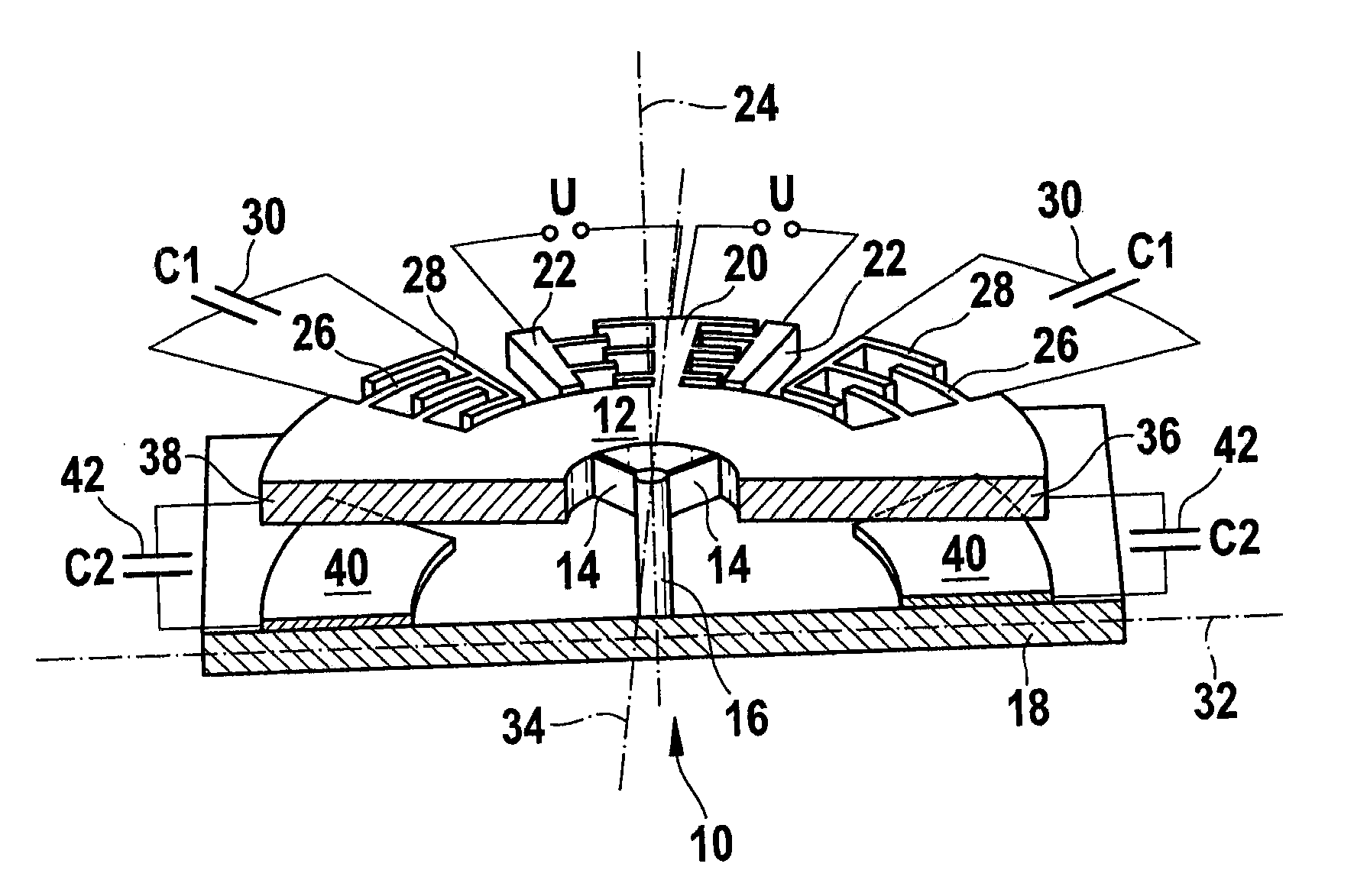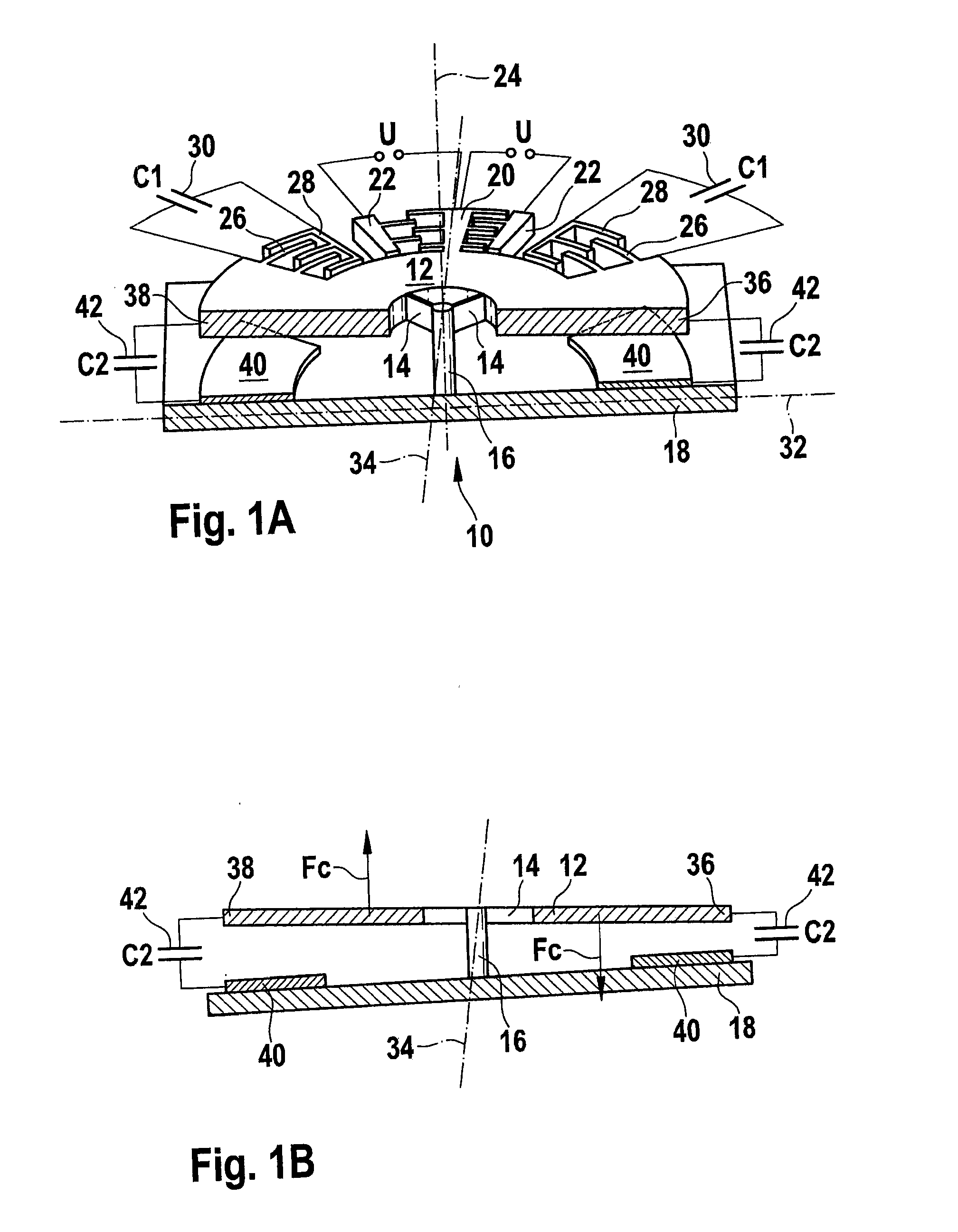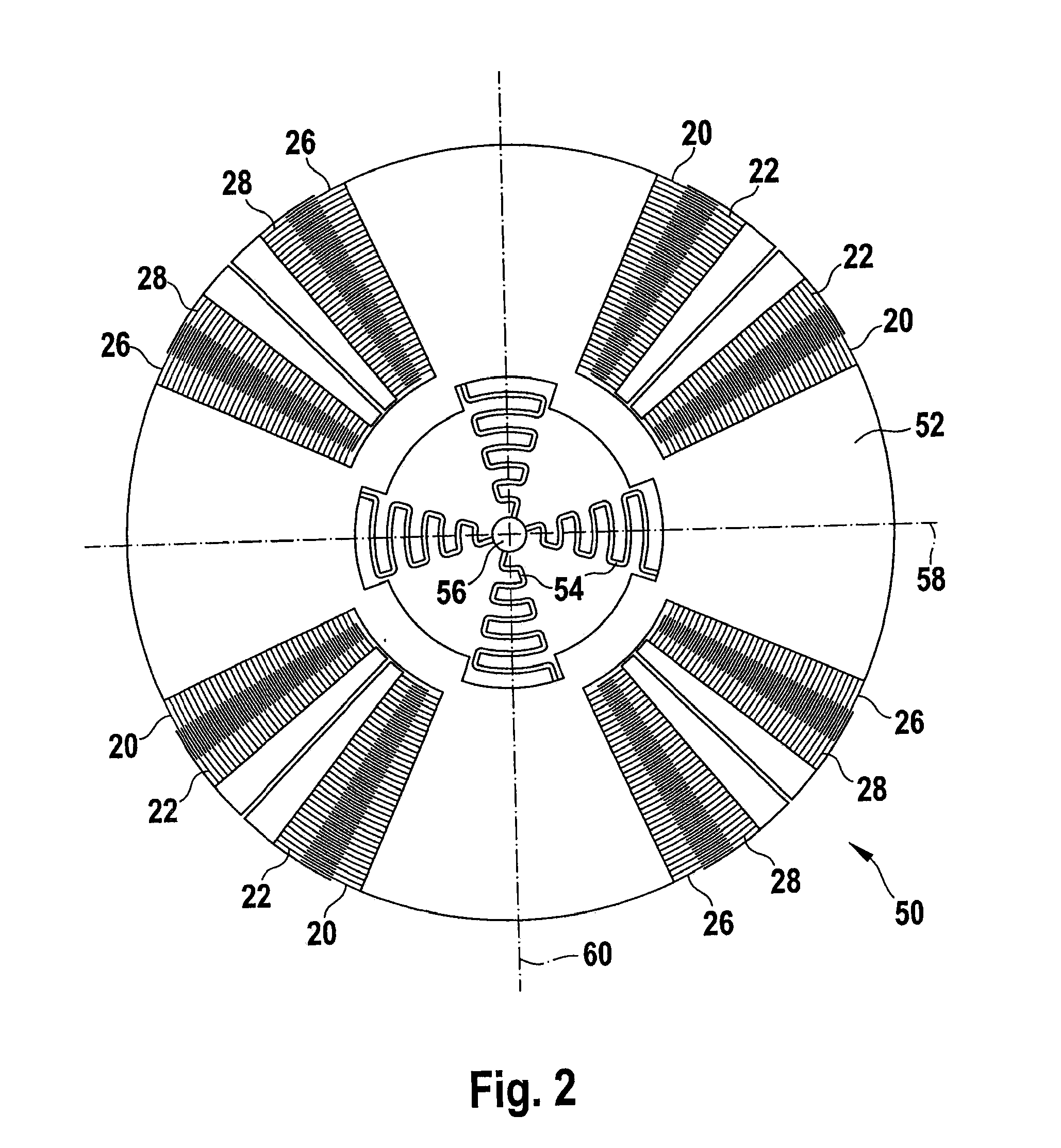Manufacturing method for a rotation sensor device and rotation sensor device
a manufacturing method and sensor technology, applied in the direction of turn-sensitive devices, acceleration measurement using interia forces, instruments, etc., can solve the problems of disadvantageous spring stiffness and/or torsional stiffness, more difficult to situate yaw-rate sensors b>50/b> on a rotatable body, and increase the electrical sensitivity of the rotation sensor device. , increase the capacitance per unit of surface area, increase the effect of sensor performan
- Summary
- Abstract
- Description
- Claims
- Application Information
AI Technical Summary
Benefits of technology
Problems solved by technology
Method used
Image
Examples
Embodiment Construction
[0052]FIG. 3 shows a flow chart to illustrate a first specific embodiment of the manufacturing method for a rotation sensor device.
[0053]In a step S1 of the manufacturing method, a layer sequence having at least one layer made of a semiconductor material and / or a metal and a second layer made of a semiconductor material and / or a metal is formed. The first layer and the second layer may have different materials. The two layers may also be formed from the same material. The first layer, for example, has a first layer thickness, which is different from a second layer thickness of the second layer. For example, the first layer thickness is less than the second layer thickness of the second layer. The first layer thickness is significantly less than the second layer thickness. For example, the first layer thickness may be less than the second layer thickness by at least a factor of 5. An insulating layer is formed between the first layer and the second layer, so that a boundary surface o...
PUM
| Property | Measurement | Unit |
|---|---|---|
| thickness | aaaaa | aaaaa |
| thickness | aaaaa | aaaaa |
| thickness | aaaaa | aaaaa |
Abstract
Description
Claims
Application Information
 Login to View More
Login to View More - R&D
- Intellectual Property
- Life Sciences
- Materials
- Tech Scout
- Unparalleled Data Quality
- Higher Quality Content
- 60% Fewer Hallucinations
Browse by: Latest US Patents, China's latest patents, Technical Efficacy Thesaurus, Application Domain, Technology Topic, Popular Technical Reports.
© 2025 PatSnap. All rights reserved.Legal|Privacy policy|Modern Slavery Act Transparency Statement|Sitemap|About US| Contact US: help@patsnap.com



